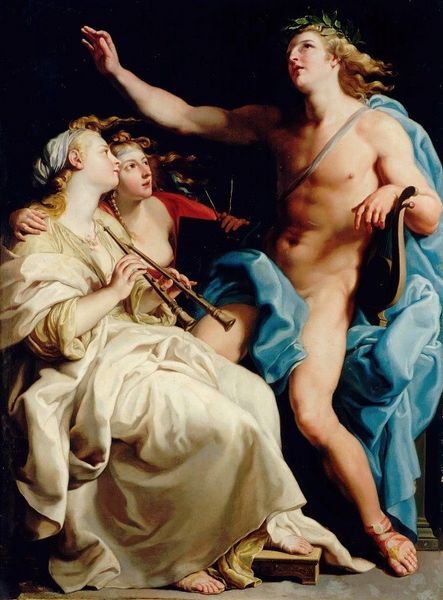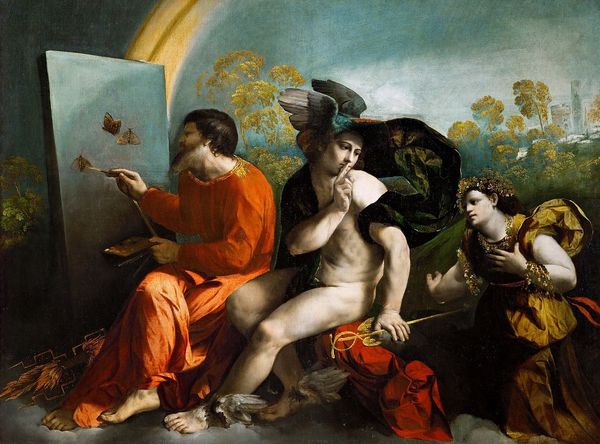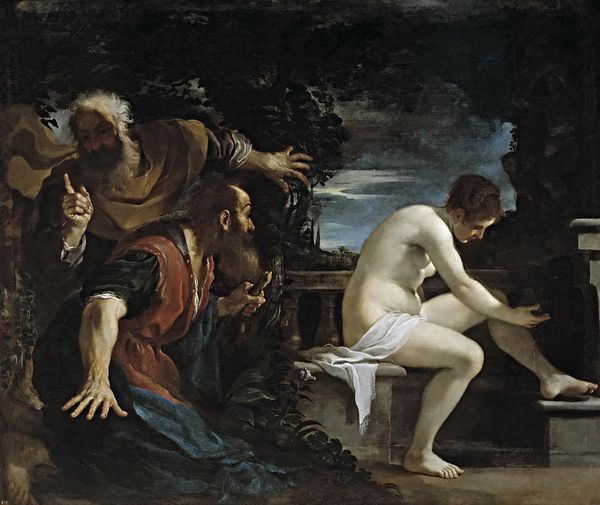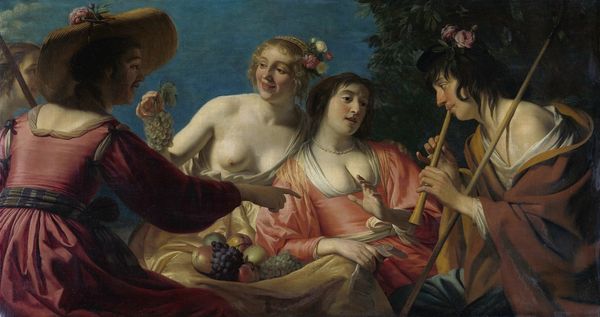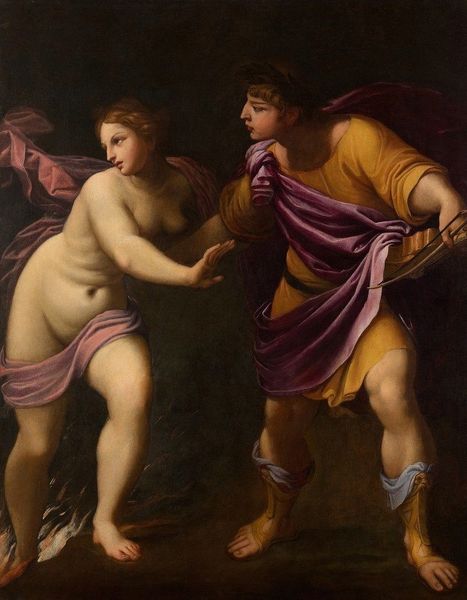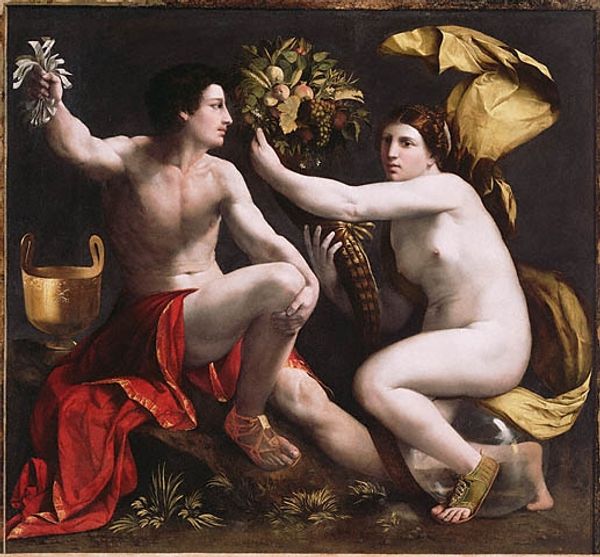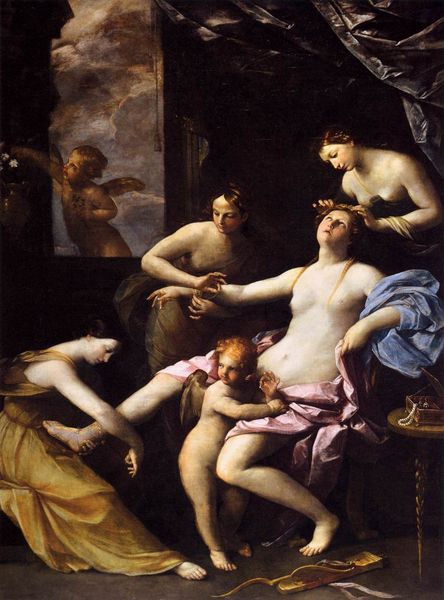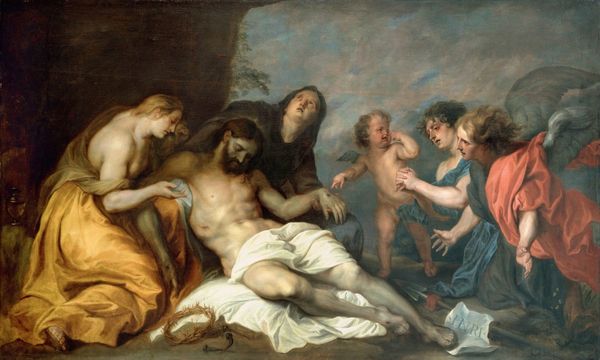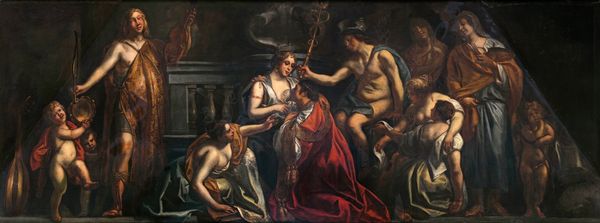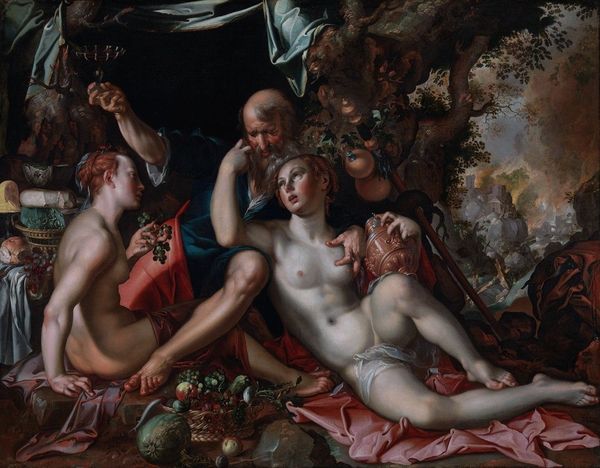
oil-paint
#
portrait
#
allegory
#
baroque
#
oil-paint
#
figuration
#
oil painting
#
mythology
#
genre-painting
#
history-painting
#
nude
Dimensions: 207.5 x 151.5 cm
Copyright: Public domain
Curator: Well, this feels...awkwardly lit. The mood is just a tiny bit menacing with that dramatic light, but then also goofy with the feather and the robe. Editor: This is Gerard van Honthorst's "The Steadfast Philosopher" from 1623, an oil painting which, indeed, treads a fine line between the serious and the slightly absurd. The painting allegorizes the steadfastness of philosophers when faced with distractions. Curator: Oh, I see it now, it is an allegory! Is that why he looks so grumpy even while resisting such an... obvious temptation? And that turban! He’s resisting with the might of all that fabric wrapped around his head. Editor: The turban, the fabrics, even the fair-skinned nude woman herself become visual tools to emphasize exotic allure. But beyond the immediately evident visual language is a deeper current about the power dynamics at play. The philosopher represents steadfast virtue. In contrast, the partially unveiled woman signifies the transience and superficiality of physical beauty. Curator: Oh, and it's totally working, by the way! He's about to succumb. The poor dude just wants to look! Seriously, this is way more staged and comical than I would expect. His expression says he is merely tolerating a distraction instead of actively ignoring a tempting interruption. Is it really that serious? Is the artist not having fun here? Editor: Perhaps, but Honthorst presents this not just as a personal battle of will, but also a political statement on intellectual and moral superiority. It implies that by staying true to intellectual pursuits and scholarly life, one transcends earthly desires, solidifying elite positions. We might critique that a bit today... Curator: You know, I get the political angle—virtue signaling is definitely timeless. But visually? I can't get past how it seems someone told the actors something very funny just before the painting began. Is this comedy, tragedy, or both? It makes me smile either way. Editor: It invites precisely this layered reaction: historical critique intertwined with visceral responses. Perhaps this is exactly why such pieces endure—they push boundaries and solicit discourse. Curator: I have to agree; there's always something intriguing in work that dances between contrary emotions. Editor: It provides multiple perspectives and allows viewers to experience history in their own terms, which, after all, is why art endures.
Comments
No comments
Be the first to comment and join the conversation on the ultimate creative platform.

